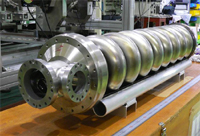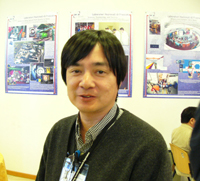 |
|||||||||||
|
|||||||||||
|
|||||||||||
|
The KEK laboratory in Japan possesses a long history of building and operating superconducting cavities, initiated in the TRISTAN days of the 1980's and with the low energy ring at KEKB, which was built in the 1990s. Most of these efforts, however, have been carried out in a context that was substantially separated from the R&D for linear colliders, because the focus of these efforts at KEK was on "warm" technology. In August 2004, when ICFA announced its adoption of the "cold" technology for the International Linear Collider, KEK faced a major challenge to redirect all efforts, which to many felt like a sudden 90-degree turn. Hitoshi Hayano was one of those who were confronted by this challenge, but he and his colleagues were fast to act. In less than a few months after the ICFA decision, Hayano and the team drafted a proposal to build an integrated test facility called STF, Superconducting RF Test Facility, for testing the ILC components such as cavities, cryomodules, cryogenics, klystrons and modulators. The KEK management was also quick to act. They made a decision in Spring 2005 to convert a large building, which had been originally built for developing the J-PARC linacs, for housing STF.
In the present proposal, STF will begin operation during Phase-2 in the Spring of 2008. Three cryomodules, aiming to be of ILC-type, will be in in full operation. Towards this stage, Hayano expects to mobilize a full collaboration between the Asian industries and KEK not only for construction but also for testing and inspection. As the coordinator of STF efforts at KEK, Hayano is responsible for facilitating various forms of related international collaborations. Frequent exchanges of scientists and engineers from institutes in Asian countries are being planned. In Spring 2005, KEK became a formal member of the TESLA Technology Collaboration. Programs with colleagues at SMTF on low-level RF, surface processing and cavities and others are also areas for possible collaboration. --Youhei Morita |
|||||||||||
| © International Linear Collider |

